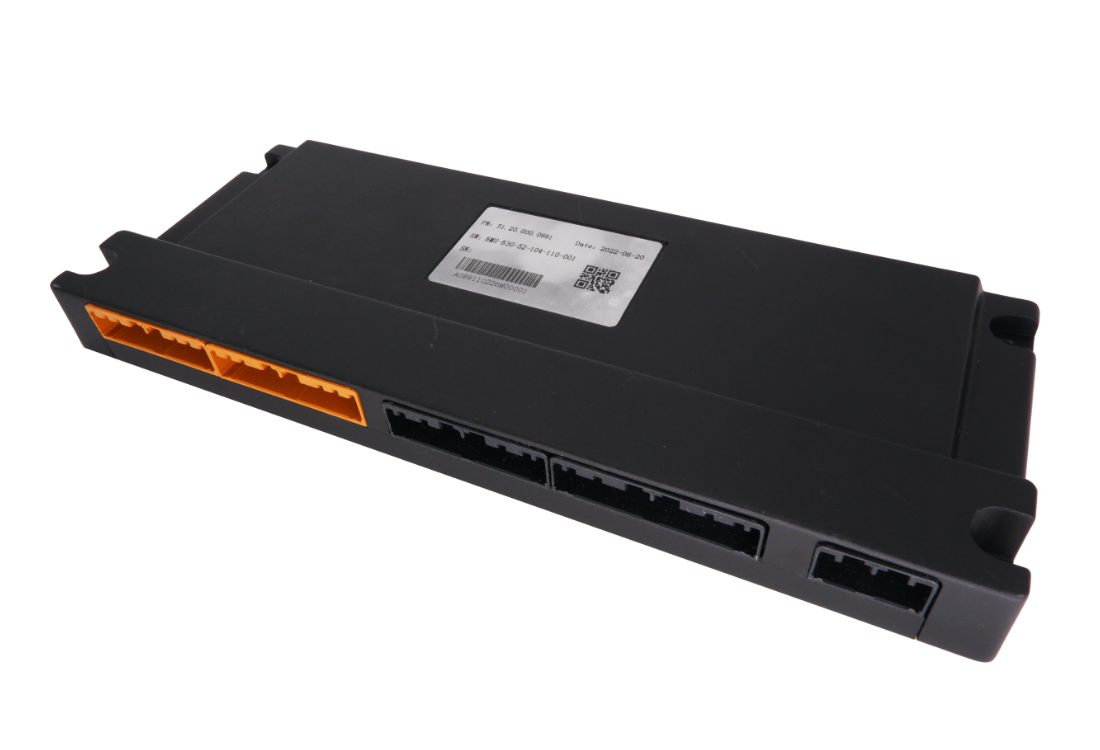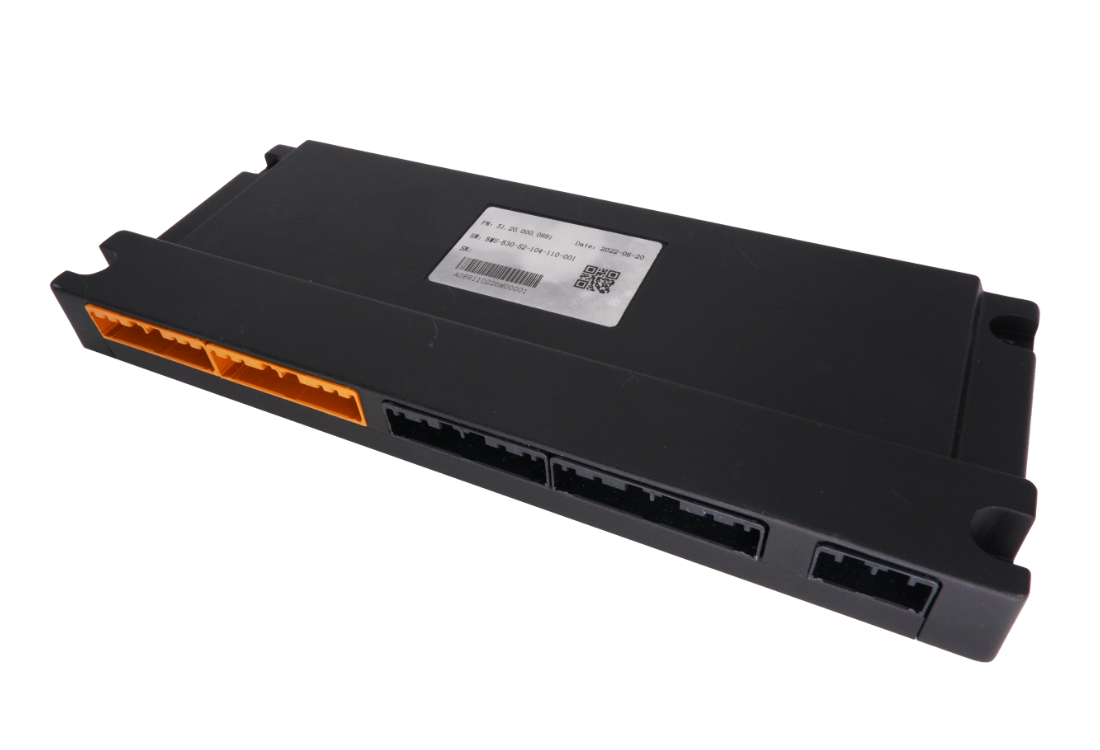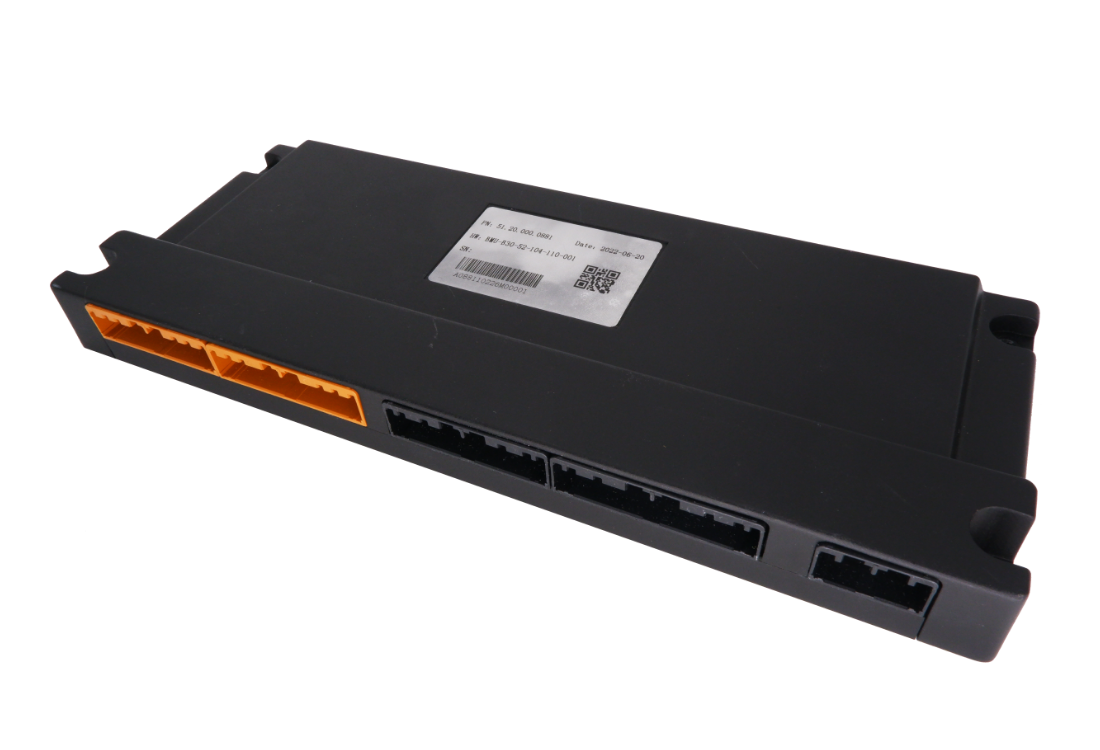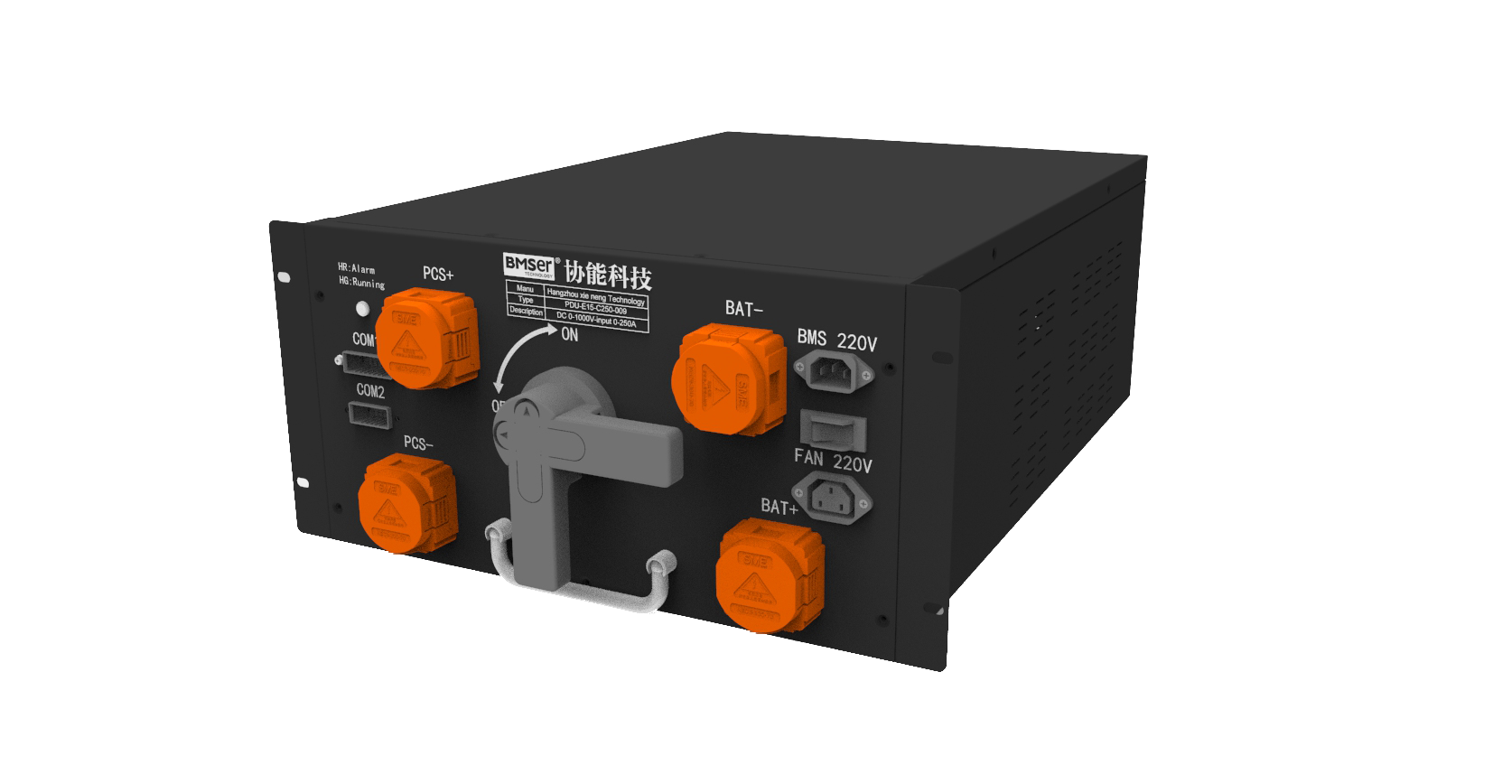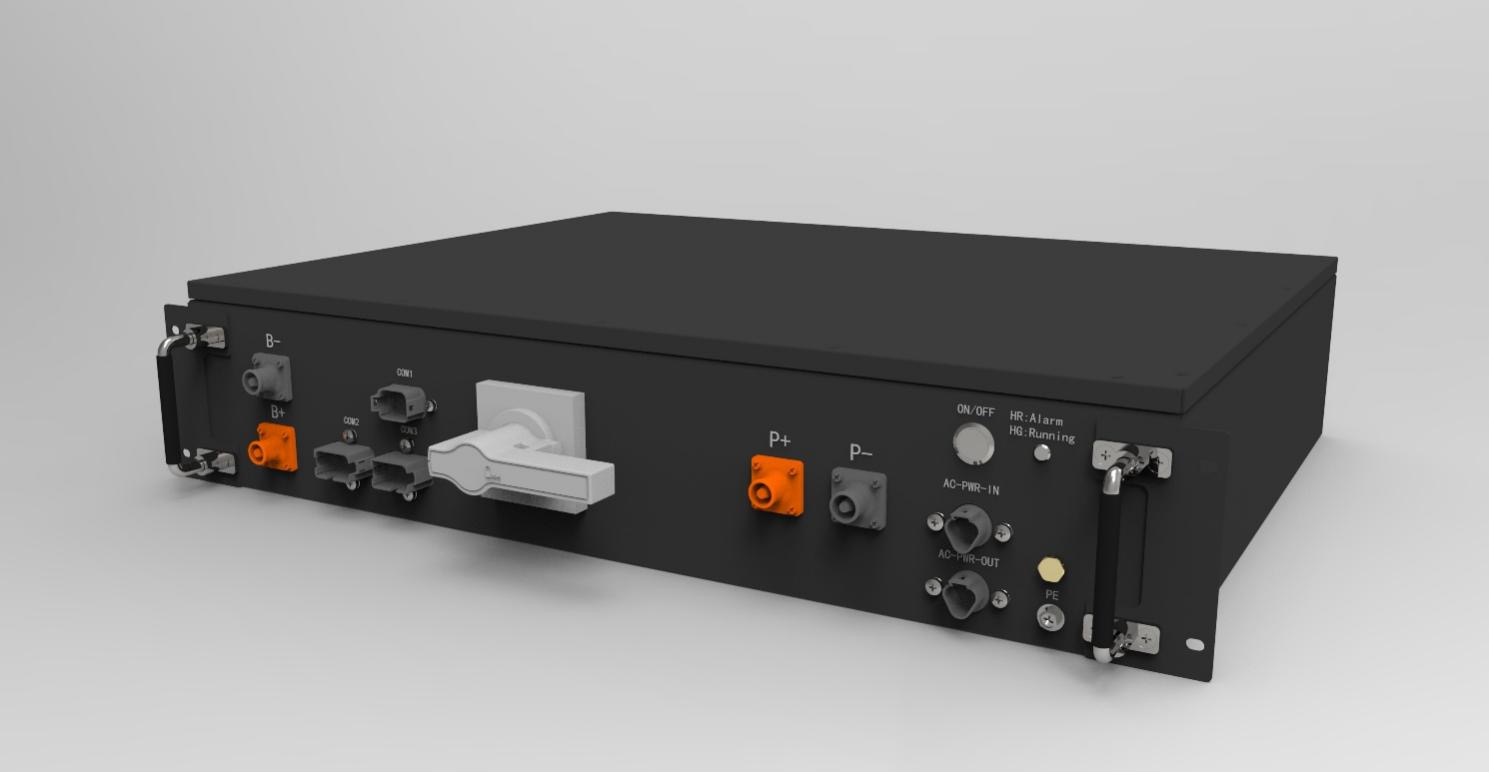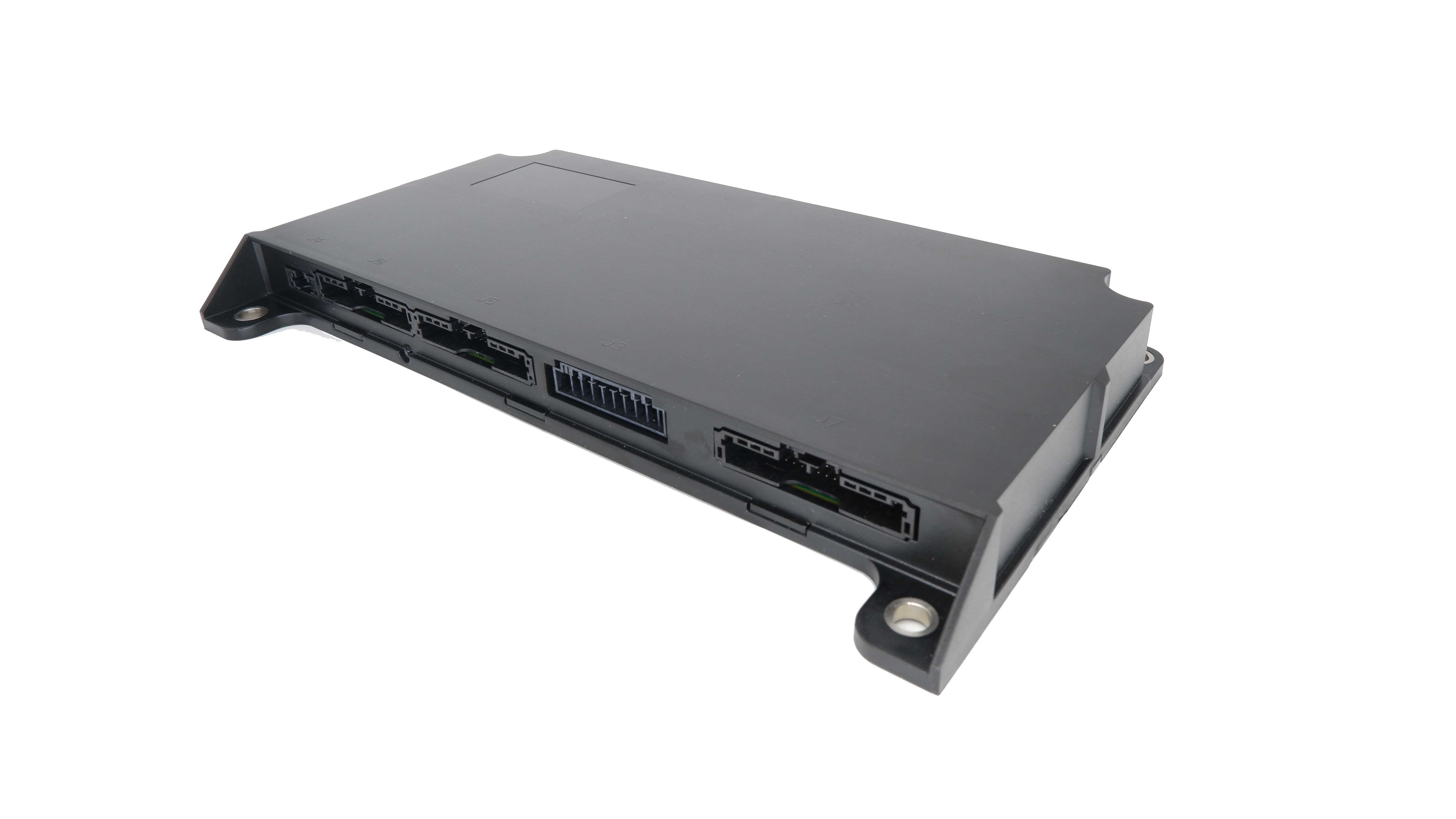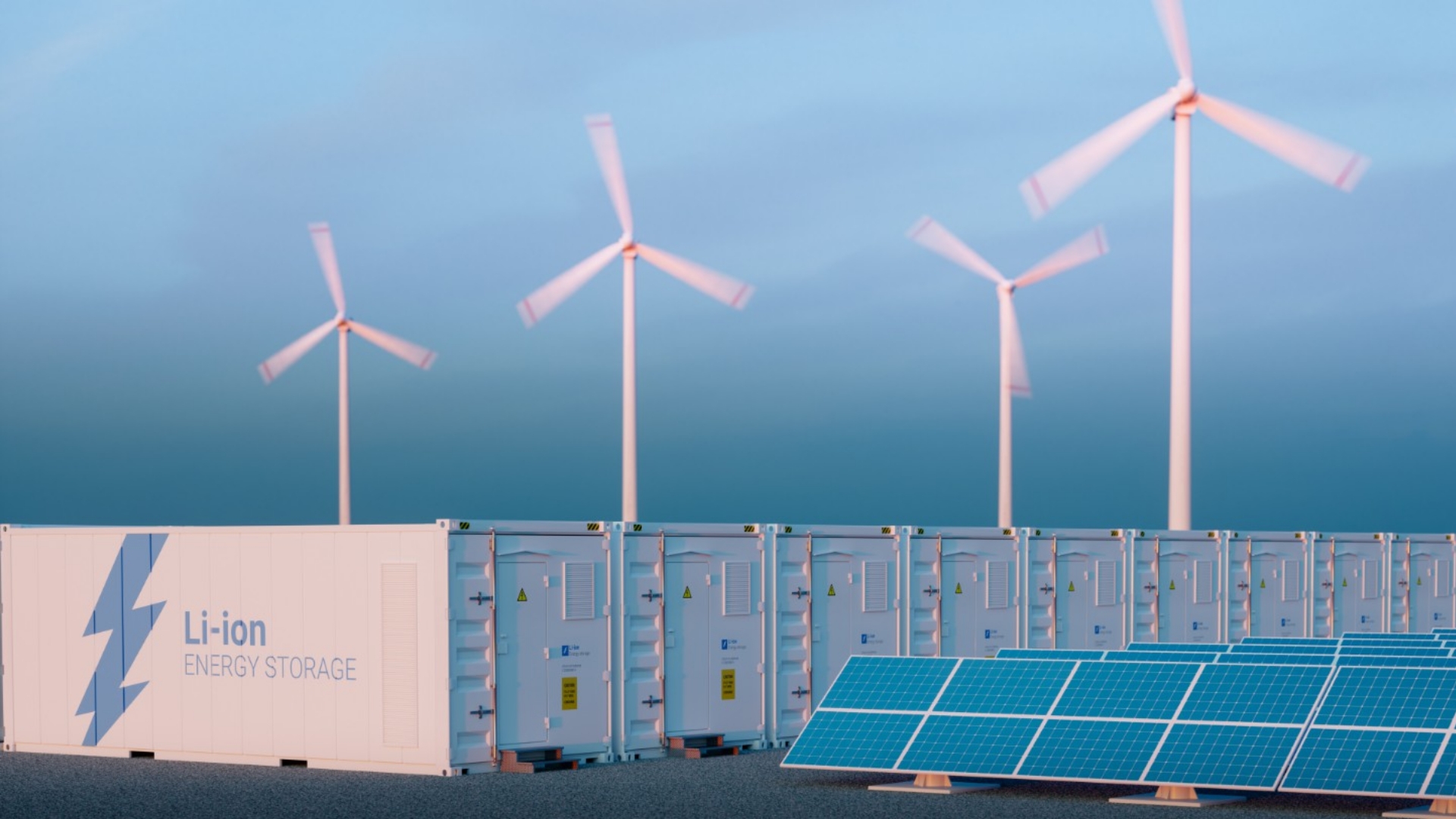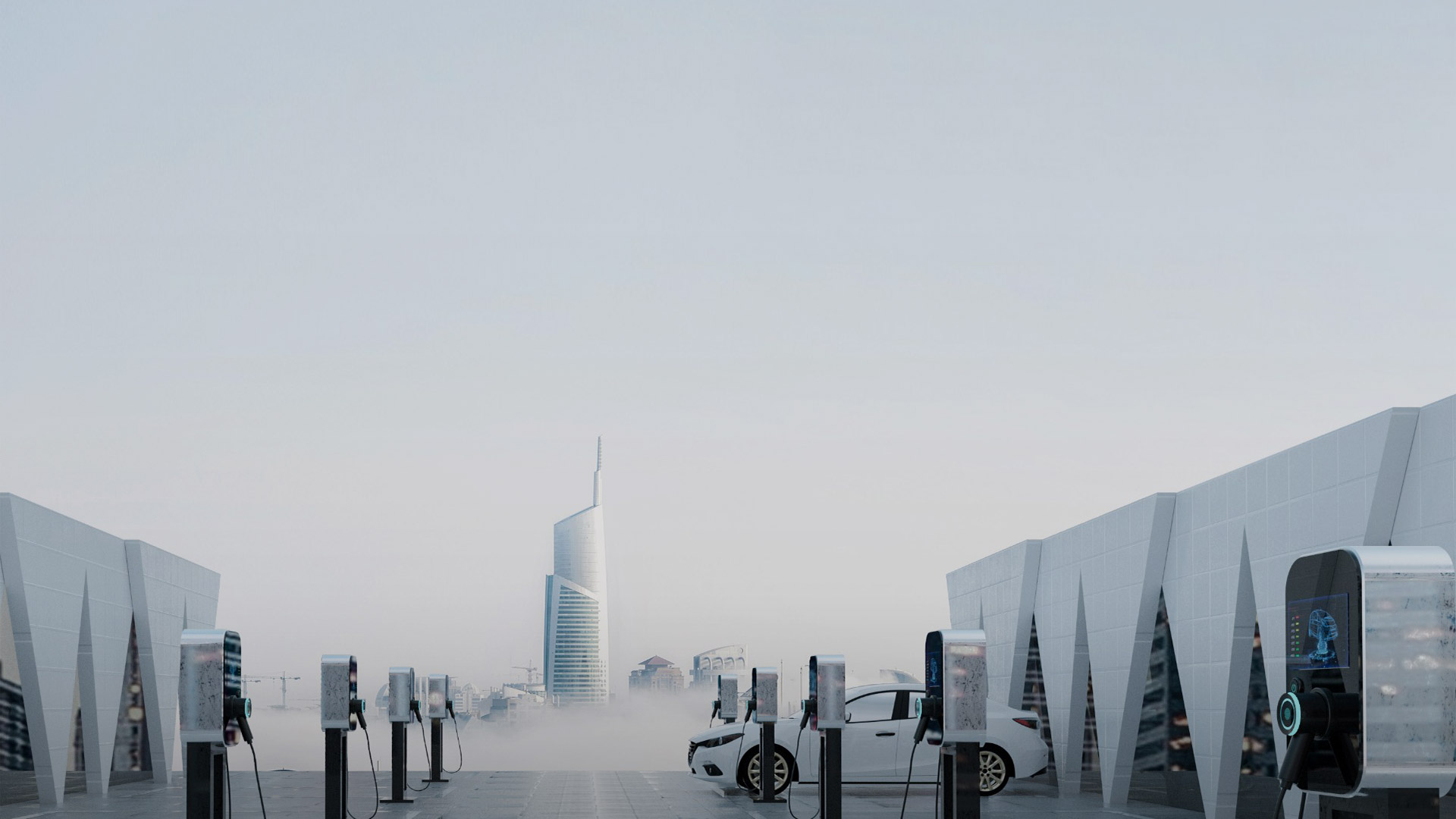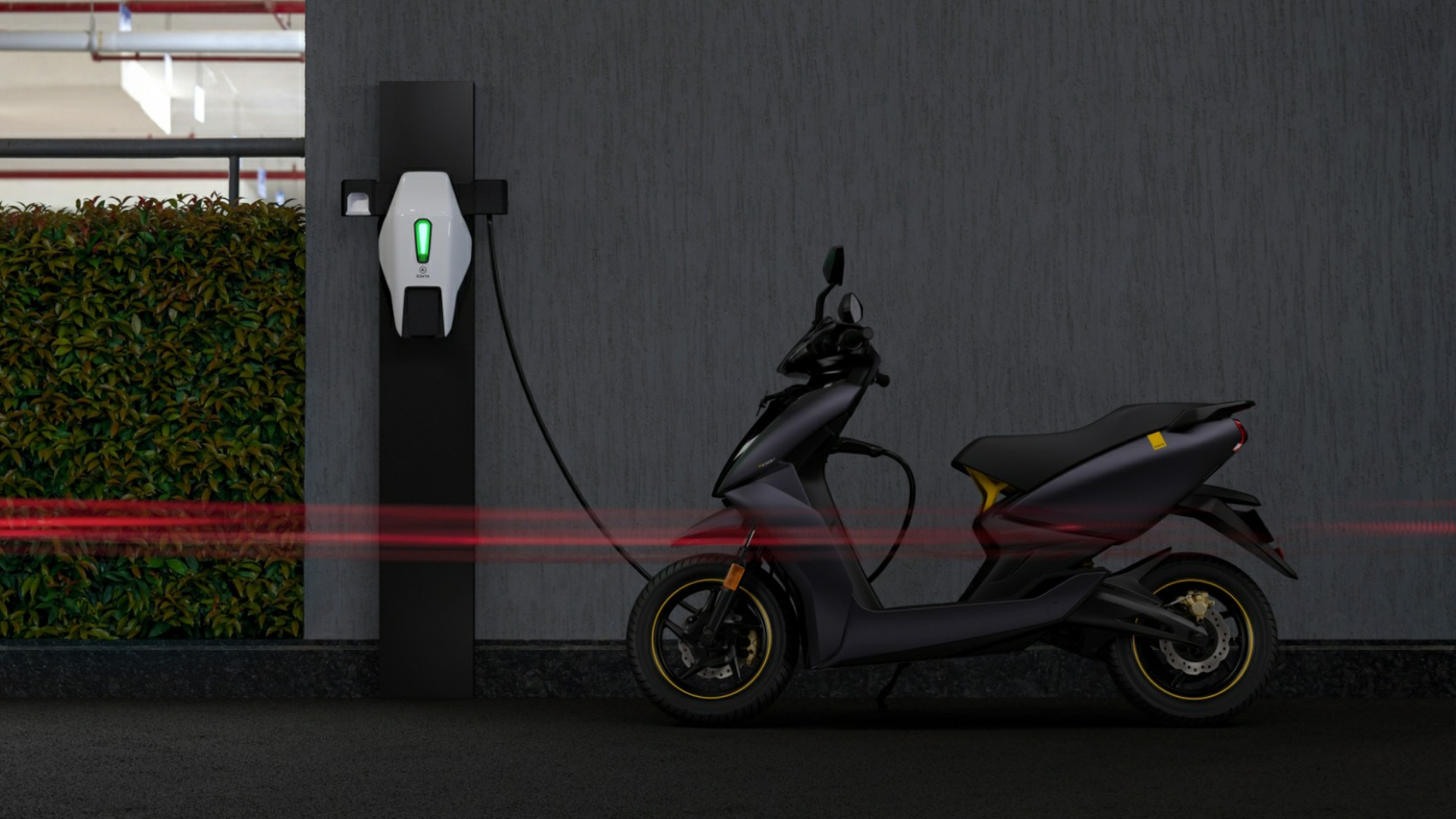Products
BPU-D30 series
BPU-D20 series
BPU-D10 series
BPU-D40 board
1500V/350A High Voltage Box
1500V/250A High Voltage Box
1500V/400A High Voltage Box
1500V/250A High Voltage Box
1000V/250A High Voltage Box
64 Strings(BMU)
32 Strings(BMU)
24 Strings (BMU)
16 Strings (BMU)
12 Strings (BMU)
Battery Array Unit
Battery Cluster Unit
12 Strings (BMU)
16 Strings (BMU)
24 Strings (BMU)
52 Strings (BMU)
FAQ
The high-pressure box is overheated.




Cause of the failure:
1. The temperature alarm threshold of the high-pressure box is incorrectly configured.
2. The copper bar connection in the high-voltage box is loose.
3. NTC fault of high-voltage box temperature acquisition.
4. Main control failure.
Resolution:
1. Modify the temperature alarm threshold of the high-voltage box to the normal range.
2. Contact after-sales service, disassemble the high-voltage box and tighten the loose copper bar.
3. Contact the after-sales service, disassemble the high-voltage box to measure the corresponding NTC resistance, and replace the faulty NTC.
4. Contact after-sales service and replace the main control
1. The temperature alarm threshold of the high-pressure box is incorrectly configured.
2. The copper bar connection in the high-voltage box is loose.
3. NTC fault of high-voltage box temperature acquisition.
4. Main control failure.
Resolution:
1. Modify the temperature alarm threshold of the high-voltage box to the normal range.
2. Contact after-sales service, disassemble the high-voltage box and tighten the loose copper bar.
3. Contact the after-sales service, disassemble the high-voltage box to measure the corresponding NTC resistance, and replace the faulty NTC.
4. Contact after-sales service and replace the main control
Pole overtemperature




Cause of the failure:
1. The battery box pole temperature alarm threshold is incorrectly configured.
2. The pole of the battery box is loosely connected.
3. NTC fault for battery box pole temperature acquisition.
4. Fault control.
Resolution:
1. Modify the alarm threshold of the battery box pole to the normal range.
2. Contact the after-sales service, disassemble the battery box and fasten the corresponding pole connector.
3. Contact the after-sales service, disassemble the battery box to measure the corresponding NTC resistance, and replace the faulty NTC.
4. Contact after-sales service and replace the control.
1. The battery box pole temperature alarm threshold is incorrectly configured.
2. The pole of the battery box is loosely connected.
3. NTC fault for battery box pole temperature acquisition.
4. Fault control.
Resolution:
1. Modify the alarm threshold of the battery box pole to the normal range.
2. Contact the after-sales service, disassemble the battery box and fasten the corresponding pole connector.
3. Contact the after-sales service, disassemble the battery box to measure the corresponding NTC resistance, and replace the faulty NTC.
4. Contact after-sales service and replace the control.
The insulation is too low




Cause of the failure:
1. The insulation alarm threshold is incorrectly configured.
2. The system has insulation faults.
Resolution:
1. Modify the insulation alarm value to the normal range.
2. Use the voltage of the multimeter to measure the total positive to ground and total negative voltage to the ground of the system, and contact the after-sales treatment if there is leakage.
1. The insulation alarm threshold is incorrectly configured.
2. The system has insulation faults.
Resolution:
1. Modify the insulation alarm value to the normal range.
2. Use the voltage of the multimeter to measure the total positive to ground and total negative voltage to the ground of the system, and contact the after-sales treatment if there is leakage.
Charging is under-temperature




Cause of the failure:
1. The charging under-temperature alarm threshold is incorrectly configured.
2. The lowest temperature value collected in the charging state is lower than the alarm threshold.
3. NTC fault for battery temperature collection.
Resolution:
1. Modify the alarm threshold of charging undertemperature to the normal range.
2. Turn on the air conditioner to heat up and let the battery temperature return to the normal range.
3. Contact after-sales service and replace the faulty NTC.
1. The charging under-temperature alarm threshold is incorrectly configured.
2. The lowest temperature value collected in the charging state is lower than the alarm threshold.
3. NTC fault for battery temperature collection.
Resolution:
1. Modify the alarm threshold of charging undertemperature to the normal range.
2. Turn on the air conditioner to heat up and let the battery temperature return to the normal range.
3. Contact after-sales service and replace the faulty NTC.
Charge over temperature




Cause of the failure:
1. The charging overtemperature alarm threshold is misconfigured.
2. The maximum temperature value collected in the charging state is higher than the alarm threshold.
3. NTC fault for battery temperature collection.
Resolution:
1. Modify the charging over-temperature alarm threshold to the normal range.
2. Contact the after-sales service, check whether there is a loose connection problem inside the battery box and tighten it.
3. Contact after-sales service and replace the faulty NTC.
1. The charging overtemperature alarm threshold is misconfigured.
2. The maximum temperature value collected in the charging state is higher than the alarm threshold.
3. NTC fault for battery temperature collection.
Resolution:
1. Modify the charging over-temperature alarm threshold to the normal range.
2. Contact the after-sales service, check whether there is a loose connection problem inside the battery box and tighten it.
3. Contact after-sales service and replace the faulty NTC.
Under-temperature discharge




Cause of the failure:
1. The alarm threshold for under-discharge is incorrectly configured.
2. The lowest temperature value collected in the discharge state is lower than the alarm threshold.
3. NTC fault for battery temperature collection.
Resolution:
"1. Modify the alarm threshold of charging undertemperature to the normal range.
2. Turn on the air conditioner to heat up and let the battery temperature return to the normal range.
3. Contact after-sales service and replace the faulty NTC. "
1. The alarm threshold for under-discharge is incorrectly configured.
2. The lowest temperature value collected in the discharge state is lower than the alarm threshold.
3. NTC fault for battery temperature collection.
Resolution:
"1. Modify the alarm threshold of charging undertemperature to the normal range.
2. Turn on the air conditioner to heat up and let the battery temperature return to the normal range.
3. Contact after-sales service and replace the faulty NTC. "
Discharge overtemperature




Cause of the failure:
1. The discharge overtemperature alarm threshold is incorrectly configured.
2. The maximum temperature value collected in the discharge state is higher than the alarm threshold.
3. NTC fault for battery temperature collection.
Resolution:
"1. Modify the charging over-temperature alarm threshold to the normal range.
2. Contact the after-sales service, check whether there is a loose connection problem inside the battery box and tighten it.
3. Contact after-sales service and replace the faulty NTC. "
1. The discharge overtemperature alarm threshold is incorrectly configured.
2. The maximum temperature value collected in the discharge state is higher than the alarm threshold.
3. NTC fault for battery temperature collection.
Resolution:
"1. Modify the charging over-temperature alarm threshold to the normal range.
2. Contact the after-sales service, check whether there is a loose connection problem inside the battery box and tighten it.
3. Contact after-sales service and replace the faulty NTC. "
Charging overcurrent




Cause of the failure:
1. The charging overcurrent alarm threshold is misconfigured.
2. The current difference of the battery cluster is too large, causing the current of a certain cluster to exceed the alarm threshold.
3. Current acquisition failure.
Resolution:
1. Modify the charging overcurrent alarm threshold to the normal range.
2. Contact the after-sales service to check whether the voltage or temperature difference of the battery cluster is too large; Check if the power line connection is loose and dispose of it.
3. Contact after-sales service to replace the faulty main control or faulty current sensor.
1. The charging overcurrent alarm threshold is misconfigured.
2. The current difference of the battery cluster is too large, causing the current of a certain cluster to exceed the alarm threshold.
3. Current acquisition failure.
Resolution:
1. Modify the charging overcurrent alarm threshold to the normal range.
2. Contact the after-sales service to check whether the voltage or temperature difference of the battery cluster is too large; Check if the power line connection is loose and dispose of it.
3. Contact after-sales service to replace the faulty main control or faulty current sensor.
Discharge overcurrent




Cause of the failure:
1. The threshold for the discharge overcurrent alarm is incorrectly configured.
2. The actual current sampling value during discharge is greater than the charging overcurrent alarm threshold.
3. The main control current acquisition fault.
Resolution:
1. Modify the discharge overcurrent alarm threshold to the normal range.
2. Contact the after-sales service to check whether the voltage or temperature difference of the battery cluster is too large; Check if the power line connection is loose and dispose of it.
3. Contact after-sales service to replace the faulty main control or faulty current sensor. "
1. The threshold for the discharge overcurrent alarm is incorrectly configured.
2. The actual current sampling value during discharge is greater than the charging overcurrent alarm threshold.
3. The main control current acquisition fault.
Resolution:
1. Modify the discharge overcurrent alarm threshold to the normal range.
2. Contact the after-sales service to check whether the voltage or temperature difference of the battery cluster is too large; Check if the power line connection is loose and dispose of it.
3. Contact after-sales service to replace the faulty main control or faulty current sensor. "
Single-unit undervoltage




Cause of the failure:
1. The single undervoltage alarm threshold is incorrectly configured.
2.Loose collection line.
3.Battery failure.
4.Slave control failure.
Resolution:
1.Modify the single undervoltage alarm threshold to the normal range.
2.Contact the after-sales service, check whether the collection line inside the battery box is loose and tighten it;
3.Contact after-sales service, measure whether the actual voltage value is normal and replenish or replace the battery.
4.Contact after-sales service to replace the faulty slave control.
1. The single undervoltage alarm threshold is incorrectly configured.
2.Loose collection line.
3.Battery failure.
4.Slave control failure.
Resolution:
1.Modify the single undervoltage alarm threshold to the normal range.
2.Contact the after-sales service, check whether the collection line inside the battery box is loose and tighten it;
3.Contact after-sales service, measure whether the actual voltage value is normal and replenish or replace the battery.
4.Contact after-sales service to replace the faulty slave control.
Single-unit undervoltage




Cause of the failure:
1. The monomer overpressure alarm threshold is incorrectly configured.
2. Loose collection line.
3. Battery failure.
4. Slave control failure.
Resolution:
1. Modify the single overvoltage alarm threshold to the normal range. 2. Contact the after-sales service, check whether the collection wire inside the battery box is loose and tighten it; 3. Contact after-sales service, measure whether the actual voltage value is normal and discharge or replace the battery. 4. Contact after-sales service, replace the faulty slave control.
1. The monomer overpressure alarm threshold is incorrectly configured.
2. Loose collection line.
3. Battery failure.
4. Slave control failure.
Resolution:
1. Modify the single overvoltage alarm threshold to the normal range. 2. Contact the after-sales service, check whether the collection wire inside the battery box is loose and tighten it; 3. Contact after-sales service, measure whether the actual voltage value is normal and discharge or replace the battery. 4. Contact after-sales service, replace the faulty slave control.
Total voltage undervoltage




Cause of the failure:
1. The total voltage under-voltage alarm threshold is incorrectly configured.
2. Main control total voltage collection line is loose.
3. Manual circuit breaker switch is not closed.
4. Master control failure.
Resolution:
1. Modify the total voltage undervoltage alarm threshold to the normal range.
2. Contact the after-sales service to check whether the total voltage collection line inside the high-voltage box is loose and tightened.
3. Close the manual circuit breaker switch of the high-voltage box.
4. Contact the after-sales service to replace the faulty main control.
1. The total voltage under-voltage alarm threshold is incorrectly configured.
2. Main control total voltage collection line is loose.
3. Manual circuit breaker switch is not closed.
4. Master control failure.
Resolution:
1. Modify the total voltage undervoltage alarm threshold to the normal range.
2. Contact the after-sales service to check whether the total voltage collection line inside the high-voltage box is loose and tightened.
3. Close the manual circuit breaker switch of the high-voltage box.
4. Contact the after-sales service to replace the faulty main control.
Total voltage undervoltage




Cause of the failure:
1. Misconfiguration of the total pressure overpressure alarm threshold.
2. Master control failure.
Resolution:
1. Modify the total voltage undervoltage alarm threshold to the normal range.
2. Contact the after-sales service and replace the faulty slave control.
1. Misconfiguration of the total pressure overpressure alarm threshold.
2. Master control failure.
Resolution:
1. Modify the total voltage undervoltage alarm threshold to the normal range.
2. Contact the after-sales service and replace the faulty slave control.
Excessive total voltage difference




Cause of the failure:
1. Cluster power line connection is loose or not connected. 2. Cluster fuse is damaged. 3. Cluster high-voltage box circuit breaker is not closed. 4. Master control main voltage collection failure.
Resolution:
1.Check the connecting wires and connect them correctly. 2.Contact the after-sales service and disassemble the high-voltage box to replace the faulty fuse. 3.Close the circuit breaker of high voltage box. 4.Contact the after-sales service, disassemble the high-voltage box to check the collection line or replace the main control.
1. Cluster power line connection is loose or not connected. 2. Cluster fuse is damaged. 3. Cluster high-voltage box circuit breaker is not closed. 4. Master control main voltage collection failure.
Resolution:
1.Check the connecting wires and connect them correctly. 2.Contact the after-sales service and disassemble the high-voltage box to replace the faulty fuse. 3.Close the circuit breaker of high voltage box. 4.Contact the after-sales service, disassemble the high-voltage box to check the collection line or replace the main control.
Inter-cluster current difference alarm




Cause of the failure:
1.Loose power line connection leads to high contact resistance. 2.Excessive temperature difference between clusters. 3.Poor battery consistency between clusters.
Resolution:
1.Check the power cable and connect it properly. 2.Check if the air conditioner or liquid cooling is turned on properly. 3.Contact the after-sales service to recharge or replace the battery.
1.Loose power line connection leads to high contact resistance. 2.Excessive temperature difference between clusters. 3.Poor battery consistency between clusters.
Resolution:
1.Check the power cable and connect it properly. 2.Check if the air conditioner or liquid cooling is turned on properly. 3.Contact the after-sales service to recharge or replace the battery.


